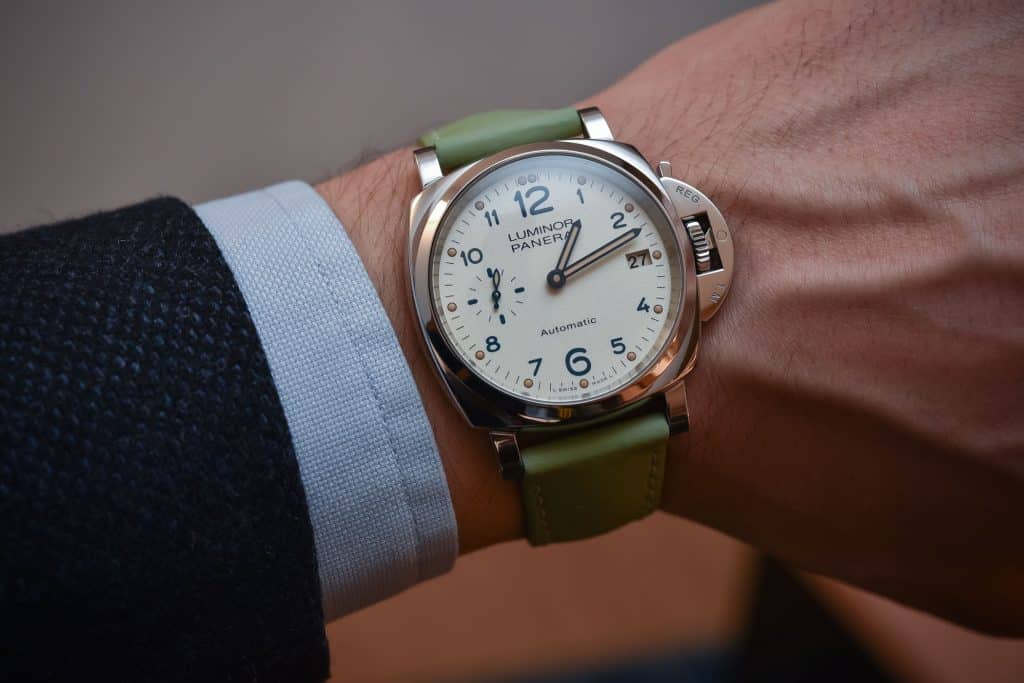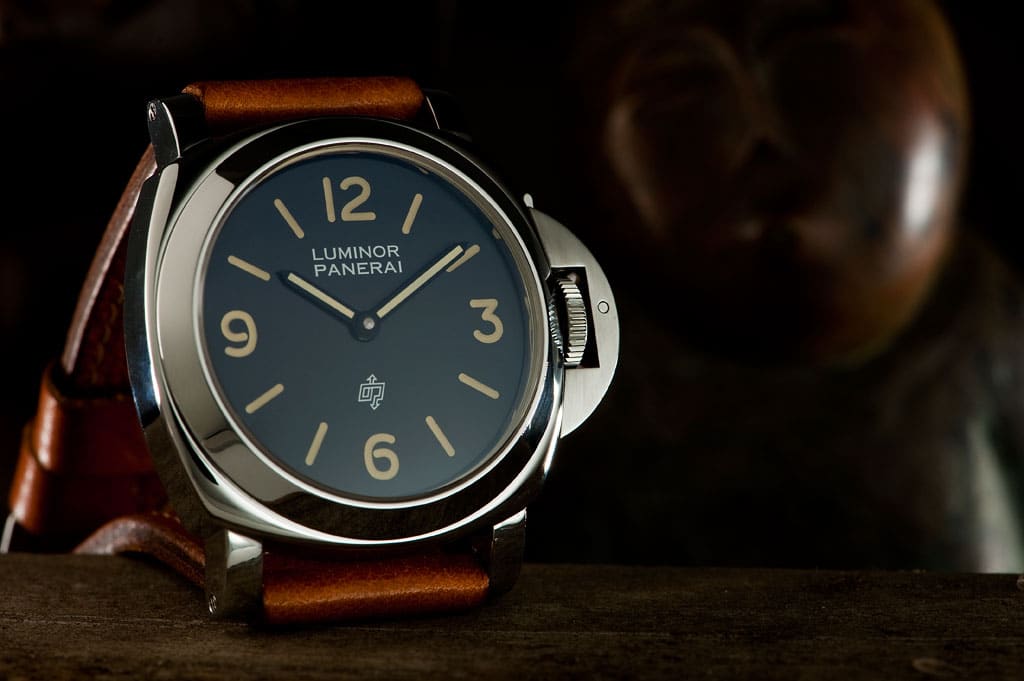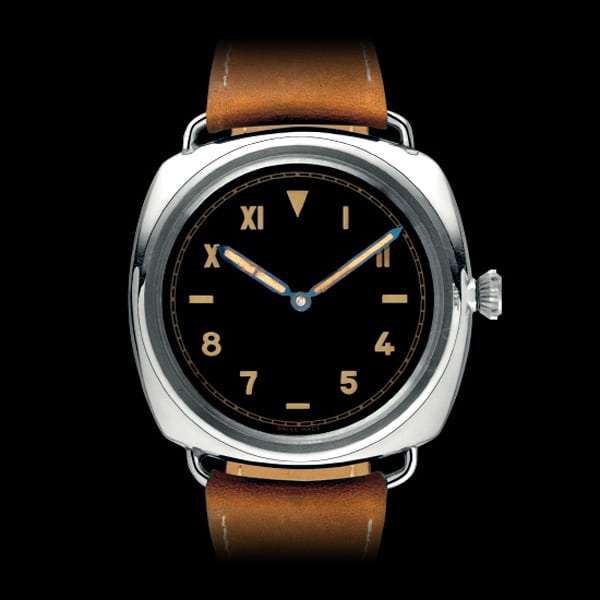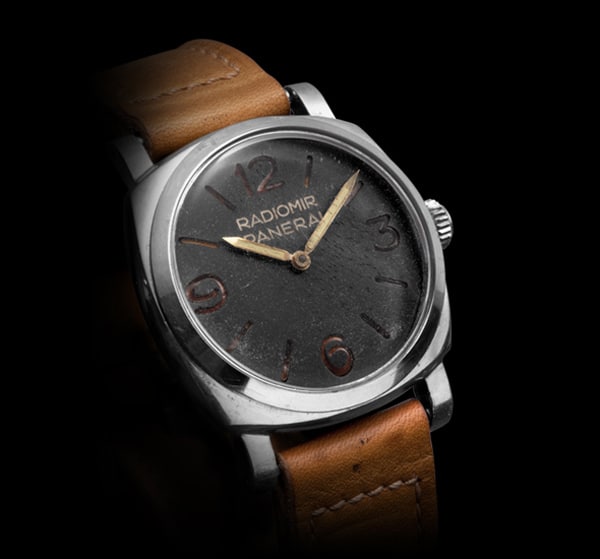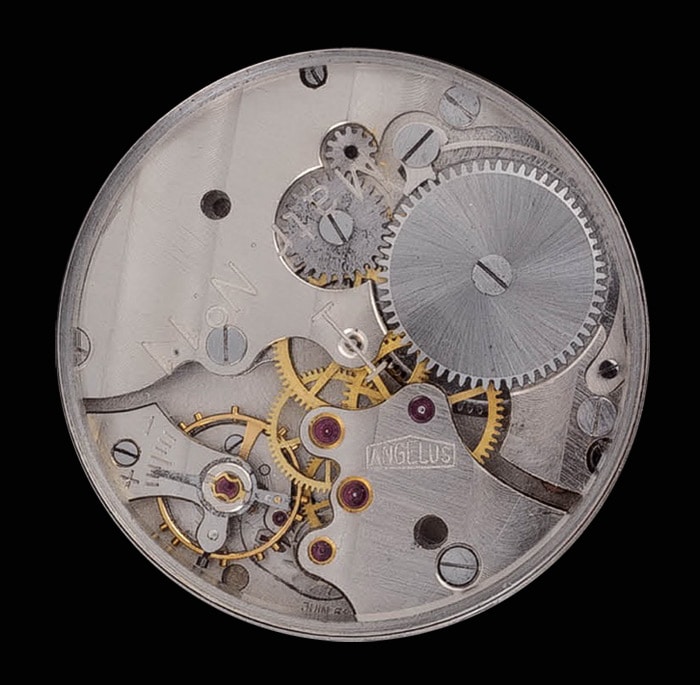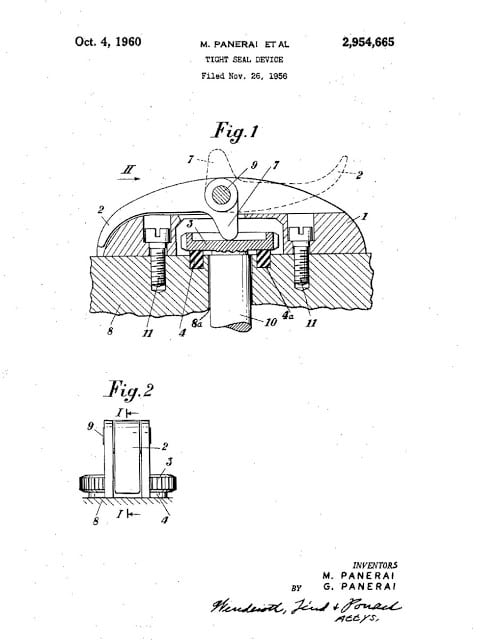Blog
The Evolution of Panerai: From Military Origins to Modern Horology Marvels
The year 1993 marked a significant milestone in Panerai’s history, particularly for their iconic timepiece, the Luminor.
In that year, the brand introduced the Luminor and its variation, the Luminor Marina, to the public for the first time. Prior to this, Panerai watches were exclusively reserved for military personnel.
Inspired directly by a historical watch model, the Luminor quickly achieved remarkable success worldwide. Let’s delve into the origins of the brand and the key events that led to the creation of this iconic timepiece. The founder, Giovanni Panerai, opened his watch shop in Florence in 1860 and soon became an authorized dealer for some of Switzerland’s most prestigious brands, including Rolex, Vacheron Constantin, and Patek Philippe.
At the beginning of the 20th century, Panerai became the official supplier to the Royal Italian Navy (Regia Marina) for highly accurate timing instruments. The invention of Radiomir, a radium-based luminescent substance that provided exceptional brightness to the dials of instruments and observation devices, marked a significant turning point for Panerai. A patent—its first in a long series—was filed in France on March 23, 1916. At that time, the effects of radiation exposure were not fully understood, and radium was used in various products, including food, toothpaste, and cosmetics!
In 1935, the Royal Italian Navy approached Panerai and other watchmakers with the request to design a watch that could withstand harsh conditions while maintaining precise timekeeping for the commandos of the First Submarine Group Command. The prototype submitted by Panerai in 1936 was named Radiomir, after the luminescent substance used for hands and markers, and it passed all tests with flying colors.
The 47mm cushion-shaped case, featuring a large onion-shaped winding crown, was exclusively produced by Rolex. It drew inspiration from the design of Rolex pocket watches and was constructed using Staybrite stainless steel (known at that time for its superior corrosion resistance capabilities).
Wire-style lugs were welded onto the case, and a waterproof strap, long enough to fit over a diving suit, completed the watch.
The hand-wound movement used in this timepiece was also from Rolex, the Calibre 618, which was produced by Cortebert exclusively for Rolex.
Only 10 prototypes were manufactured during this period, experimenting with different dial layouts protected by a 4mm-thick Perspex crystal.
The Ref. 2553 model featured hour markers in the form of dashes and dots, while the Ref. 3646 was distinguished by a split dial design with Roman numerals on the top half and Arabic numerals on the bottom half, a design inspired by certain Rolex models. Nowadays, this type of dial is commonly referred to as “California” because in the 1980s, a significant number of Rolex Bubbleback watches were refurbished by a California-based company using this style.
Panerai secured a contract with the Royal Italian Navy, and after an extensive period of secret testing, the first batch of watches (Ref. 3646) was delivered in 1938.
The watch’s readability was enhanced through a unique dial structure known as the “sandwich” dial, consisting of two stacked layers. The lower layer contained radium-based compound covered by a thin, transparent Perspex layer, while the upper layer featured cut-out indices and numerals to make the radium paint more legible and luminescent.
The dial design was further modified by incorporating Arabic numerals at key positions, surrounded by a series of hour markers.
The watch continued to evolve to better meet the Royal Italian Navy’s requirements. In 1940, the soldered wire-style lugs were replaced with larger lugs made from the same block of steel as the case, which improved the watch’s water resistance capabilities (Ref. 6152-1).
In the subsequent years, as Panerai’s role as a supplier for Rolex was nearing its end, Panerai began equipping its watches with the Angelus 240 movement, providing an impressive 8 days of power reserve, a significant improvement compared to the 41 hours offered by the Rolex Calibre 618.
Increasing the power reserve helped reduce the frequency of winding the watch, making it easier to maintain water resistance over time.
In 1949, Panerai introduced a new self-luminous substance called Luminor, which was not only safer than the radium-based Radiomir but also offered brighter luminescence.
The transition from Radiomir to Luminor was completed in the 1950s with the invention of the iconic crown-protecting device, patented in Italy in 1955 and shortly after in the United States. The patent application for the “locking device” was submitted by Giovanni’s siblings, Giuseppe and Maria Giuseppe Panerai, who were also credited as inventors.
This solution ensured water resistance to a depth of 200 meters or 660 feet, a remarkable achievement at the time.
While the earliest prototypes still featured ‘Radiomir’ on the dial, various names such as ‘Marina Militare’ and ‘Luminor’ were used once actual production commenced. All models, with or without the new locking device, were identified by reference number 6152-1 and were equipped with either the Angelus 240 or Rolex Calibre 618.

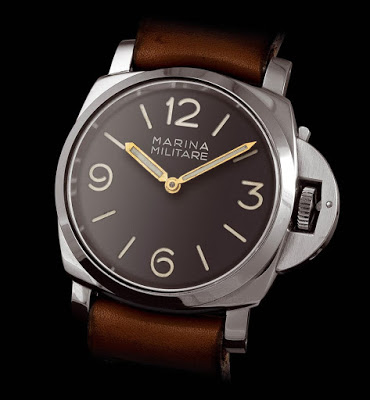
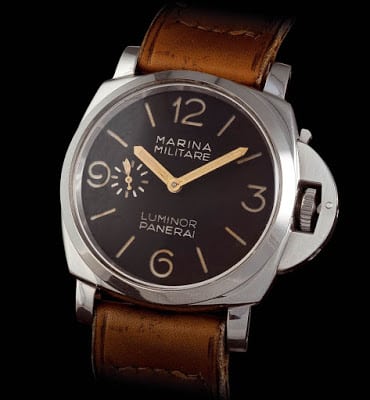
Apart from the Italian Navy, in the 1950s, the Egyptian Navy also requested specific variations of Panerai watches. The ‘small Egiziano’ model (ref. 6154), lacking the crown-protecting device, was similar to the reference 6152-1 but slimmer. The ‘big Egiziano’ model from 1956 (ref. GPF 2/56) was a completely modified watch with a massive 60mm diameter and a new rotating bezel with a scale for measuring dive time. Both featured the Radiomir signature on the dial.

Supplying the Italian Navy continued with limited quantities and under military secrecy, making it challenging to estimate the exact production numbers. Most experts agree that Panerai produced around 300 watches until 1992. The rarity of these watches explains their high value at international watch auctions.
A record for the sale of vintage Panerai watches was set at Sotheby’s “Important Watches” auction held in Geneva on May 14, 2014. An extremely rare example of a stainless steel Luminor from 1955 was acquired by a Panerai enthusiast for 425,000 Swiss Francs. Another 6152-1 model, possibly dating to around 1955, this unique Luminor featured a polycarbonate bezel, transparent with either small luminescent indices or black dots. The removable bezel was an unprecedented feature, indicating it may have been a prototype that was never mass-produced.
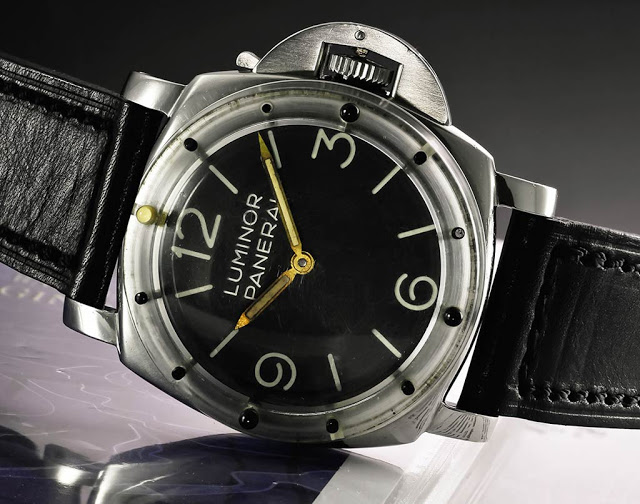
The company G. Panerai & Figlio changed its name to Officine Panerai. The name change occurred in 1972 when engineer Dino Zei took over the company after the death of Giuseppe Panerai.
In September, Officine Panerai introduced to the public a limited-edition collection of three watch series: Luminor, Luminor Marina, and Mare Nostrum, directly inspired by historical models created fifty years earlier.

The new Officine Panerai Luminor reference 5218-201/A was immediately nicknamed the “Logo” due to the use of the special “OP” logo on the dial, just above the numeral ‘6’.
The black dial, made of brass, featured four Arabic numerals at 3, 6, 9, and 12 o’clock, along with luminescent tritium-filled hour markers (the “sandwich” construction will be reintroduced later). The hour and minute hands were also treated with tritium. At 12 o’clock, the text read ‘Luminor Panerai.’ The watch also used a 3.5mm thick sapphire crystal.

The 316L stainless steel case is slightly smaller in size compared to the original models, but with a diameter of 44 mm, it was still one of the largest watches available at the time. It features integrated lugs and the characteristic crown protection device, ensuring water resistance up to 30 ATM (300 meters / 1000 feet). The cushion-shaped case design has been slightly redesigned compared to the historical model 6152-1, giving the new model its own distinctive character.
The case back utilizes a 12-sided screw-down case back engraved with the words “Officine Panerai Firenze” and the ‘OP’ logo. The movement used is the hand-wound Unitas 6497 with a beat rate of 18,000 vph (2.5 Hz) and a power reserve of 46 hours.
The watch comes with a wooden presentation box featuring a silver Panerai logo on the front, an additional strap, and a strap-changing tool with spare screws and tubes for strap removal/installation.
After the initial 10 prototypes, Panerai planned to produce 899 units of reference 5218-201/A, but only 677 pieces were actually manufactured. In reality, the remaining 212 units were reserved for three special editions related to Hollywood superstar Sylvester Stallone.
Panerai also introduced a second Luminor model (reference 5218-202/A) exclusively for the Italian Navy. The 44mm steel case was treated with a PVD (titanium nitrate) coating for a matte black finish. The black dial featured two lines of text: Luminor Panerai at the 12 o’clock position and Marina Militare at the 6 o’clock corner.
In addition to the standard 10 prototypes, Panerai produced 150 units of this model.
In 1995, a fortunate event would determine a significant turning point for Panerai’s worldwide success. While in Italy, renowned actor Sylvester Stallone noticed a Panerai watch in a jewelry store and liked it so much that he asked Officine Panerai to create a special edition for his use during underwater scenes in the movie “Daylight.”
Officine Panerai produced the Luminor Submersible, featuring a black dial with a small seconds sub-dial at 9 o’clock and two inscriptions: Luminor Submersible at 12 o’clock and Slytech Panerai at 6 o’clock (Sly being Sylvester Stallone’s nickname). Production included 12 prototypes (reference 5218-201/A) and 95 regular models with reference 5218-205/A.

Stallone later requested a Luminor Submersible model with a white dial, named “Daylight,” in a limited production of 105 pieces (reference number 5218-207/A).

All of these watches featured the actor’s signature engraved on the back.
In addition to wearing Officine Panerai Luminor in his movie “Daylight,” Sylvester Stallone also gifted them to his friends.
One of his friends was Arnold Schwarzenegger, who also became a Panerai fan and wore a Luminor Marina in his movie “Eraser.”
These situations contributed to creating a significant buzz around Panerai and attracted the attention of the Vendôme Luxury Group (now Richemont Group), which completed the acquisition of Officine Panerai’s watchmaking business in 1997. The watches produced from 1993 to 1997 are often referred to as “Pre-Vendôme” models.
The following year, the brand was introduced to the international luxury watch market and expanded its collection with various versions of Luminor and Luminor Marina (as well as a new version of Mare Nostrum), identified by the new PAM (Panerai Model) reference numbers.
The Luminor Base models have a 44mm diameter and house the hand-wound OP I movement – featuring hours and minutes – based on the ETA 6497, beating at 21,600 vph with a power reserve of 56 hours.
The Luminor Marina models also have a 44mm diameter and feature the hand-wound OP II movement – with hours, minutes, and a small seconds sub-dial at 9 o’clock – based on the ETA 6497/2, beating at 21,600 vph with a power reserve of 41 hours.

In the following years, Officine Panerai continued to expand the Luminor family and experienced extraordinary global success, often described with the term “Paneraimania.”
The Luminor case introduced in 1993 was joined, in 2002, by the Luminor 1950 case with intricate profiles directly inspired by the models Panerai created in 1950, hence the name.
Produced in a limited edition of 1950 pieces, the Luminor 1950 PAM 127 features a polished stainless steel case with a 47mm diameter framing a black “sandwich” dial. The transparent case back allows a view of the Calibre OP XI, COSC certified and based on the ETA 6497/2 movement.
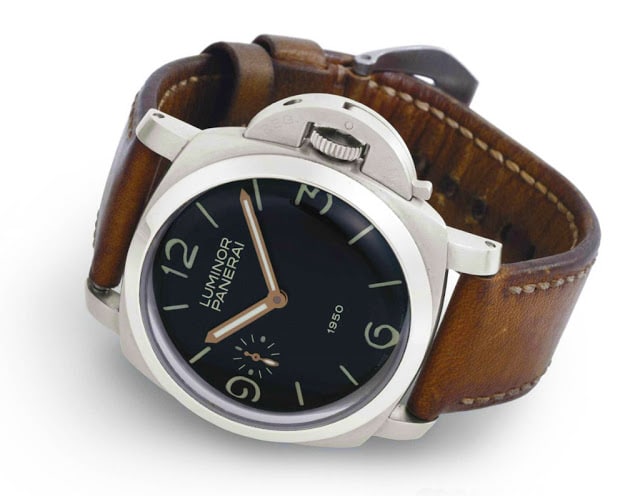
The Luminor 1950 case is quite similar to the standard Luminor when viewed from the front, but from the side it’s easy to see the difference. The sapphire crystal is slightly domed to enhance the vintage look, and the crown guard’s lever is slightly thicker than that used in the standard Luminor.

Today, both types of cases are in use. The standard Luminor case is usually available in 40 and 44mm versions, while the Luminor 1950 is currently offered in three sizes: 42, 44, and 47mm.
In 2005, Officine Panerai introduced its first in-house movement, the P.2002 (Only in 2005, Officine Panerai inaugurated the manufacturing plant in Neuchâtel). An 8-day power reserve pays tribute to the historical movements Panerai applied in the 1940s. As of today, Officine Panerai has developed at least 25 in-house automatic and hand-wound movements.
Today, the Panerai 1950 47mm PAM 372, featuring the in-house Calibre P.3000 movement and a matte black “sandwich” dial, is highly regarded by Panerai enthusiasts for its clean design and unwavering commitment to historical Luminor design in terms of size, case design, and dial structure.
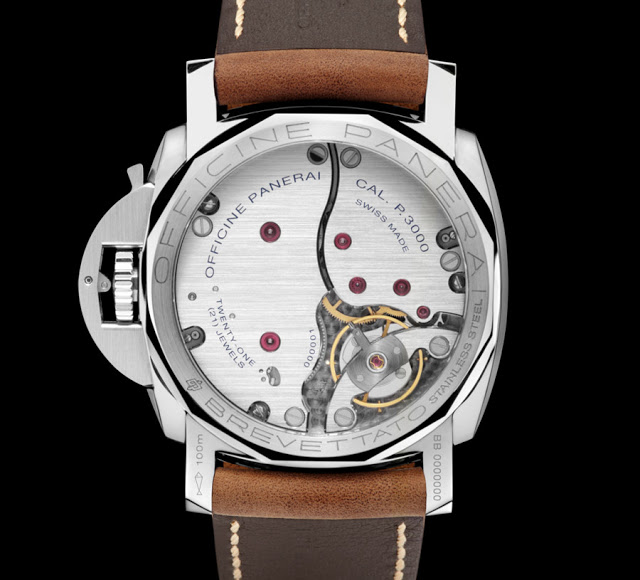

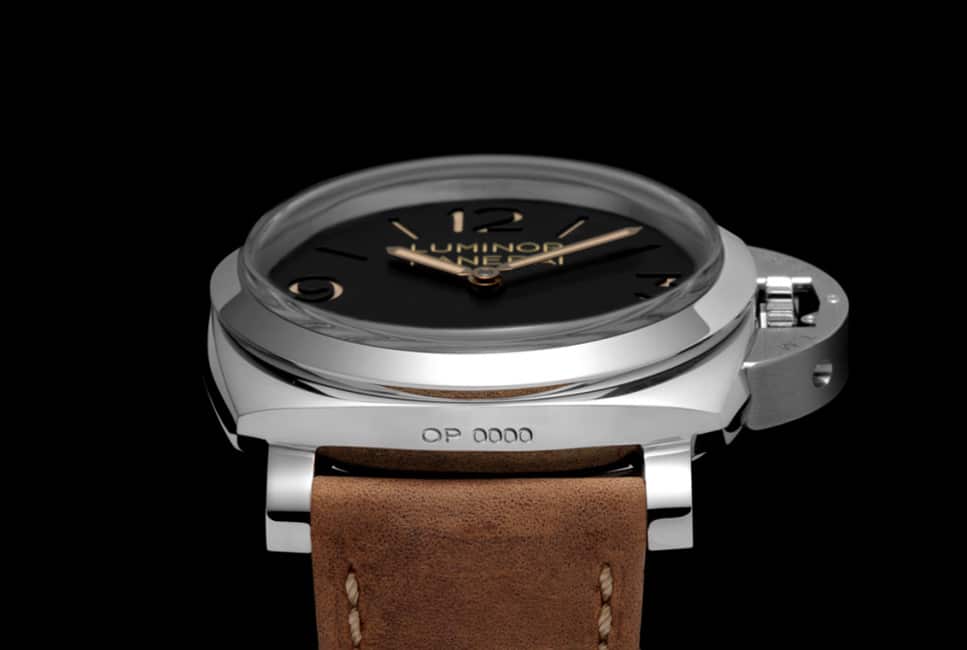
There’s no doubt that the Panerai Luminor is one of the most recognizable and highly regarded sports watches with an unmistakable design and compelling history. Officine Panerai has successfully developed the Luminor into a series of models with advanced functions, ranging from GMT to a range of full-fledged chronographs, from 8-day power reserve to precious tourbillon-equipped models.
Read more: Blog about watches at thegioidonghodep.com
